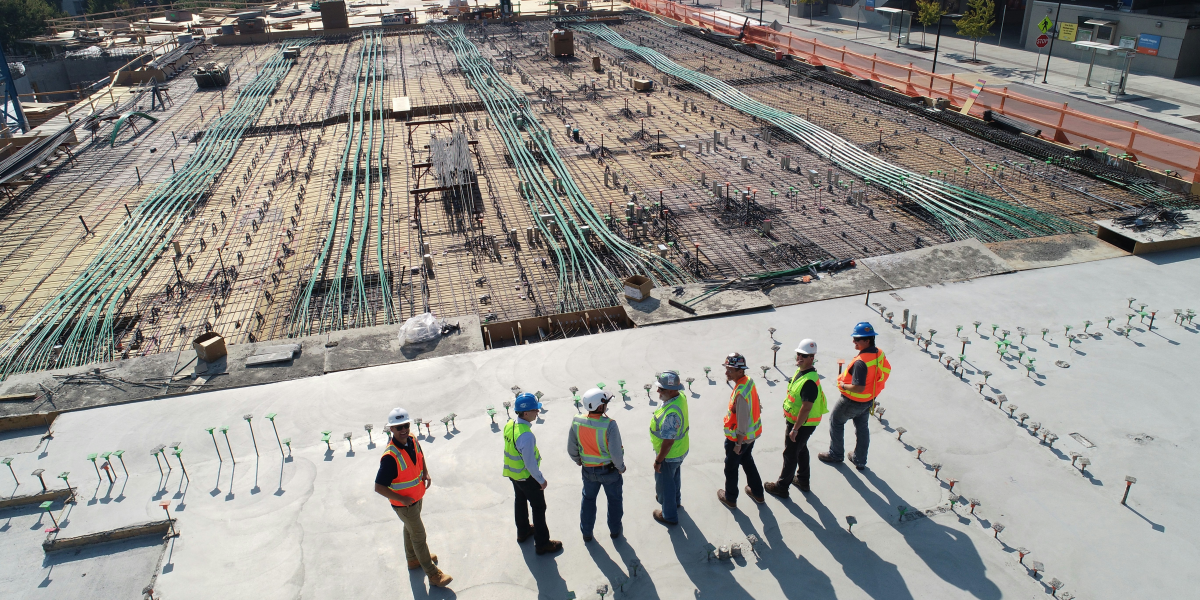By: Viraj Shah
Common Construction Site Accidents and How to Prevent Them
Construction sites are dangerous by nature. Accidents are bound to happen with heavy machinery, elevated platforms, and many moving parts. Construction is one of the industries with the highest rates of workplace injuries and fatalities. According to the Occupational Safety and Health Administration (OSHA), one in five worker deaths occur in construction, making it a critical area for workplace safety improvement.
Keep reading to learn about common accidents on construction sites and tips on how to prevent them.
Falls from Heights
Falls are the number one cause of death in the construction industry. Workers on scaffolds, ladders, roofs, or other elevated platforms are constantly at risk. The absence of proper safety gear like harnesses or guardrails only worsens the situation. In 2022 alone, OSHA reported over 1,000 deaths due to falls, underscoring the urgency of fall prevention measures.
Prevention Tip: To minimize the risk of falls, strict safety rules must be in place, requiring workers to wear fall protection gear at all times. Employers must provide guardrails, safety nets, or personal fall arrest systems for all elevated work areas. Supervisors should also regularly inspect scaffolding and ensure it’s set up correctly, stable, and fully inspected before each use. Worker training should also emphasize safe ladder usage and the dangers of unprotected edges or open holes.
Struck-by Accidents
Struck-by incidents occur when a worker is hit by falling, swinging, or flying objects. Construction sites are full of heavy equipment, tools, and materials, making the possibility of being struck by something a serious threat. Even a small slip-up can have dire consequences. Common sources of struck-by accidents include vehicles, cranes, and materials falling from above.
Prevention Tip: To prevent struck-by accidents, workers should always be equipped with personal protective equipment (PPE) such as hard hats and high-visibility vests. Employers should implement strict guidelines for operating heavy machinery and storing materials safely, especially in high-traffic areas. Tools and equipment should be properly secured when not in use, and workers must be trained to maintain awareness of overhead hazards.
Electrocutions
Working near power lines or with faulty electrical systems puts workers at risk of electrocution. Inadequate grounding, exposed wires, or damaged equipment are often the culprits behind these deadly accidents. OSHA ranks electrocutions as one of the “Fatal Four” hazards in construction, meaning they are one of the causes of worker fatalities.
Prevention Tip: Employers should offer comprehensive training to workers on how to identify and avoid electrical hazards on the job site. All electrical tools and equipment should be properly insulated and grounded to prevent accidental contact with live wires. Workers must maintain a safe distance from overhead power lines and avoid using metal ladders near them. It’s also essential to have regular inspections of electrical systems to identify and repair any potential hazards before work begins.
Caught-In/Between Accidents
Caught-in/between accidents occur when a worker is trapped, crushed, or pinned by equipment, walls, or collapsing structures. This type of accident can happen when working in trenches, near heavy machinery, or around unstable structures. These incidents are particularly dangerous and often lead to severe injuries or fatalities.
Prevention Tip: Workers should always be aware of their surroundings and stay clear of heavy machinery, moving parts, and unstable structures. Employers should ensure that machinery is equipped with protective guards, and trenches should be properly supported or shored to prevent collapses. Workers must be trained on excavation safety, and regular inspections of trenching sites are crucial to ensure they are safe to enter.
Vehicle and Machinery Accidents
Heavy equipment like bulldozers, cranes, and dump trucks are a common sight on construction sites. These vehicles pose a serious risk to workers, especially if operators lose control or fail to follow safety protocols.
In a recent accident near Bel-Air, a worker tragically lost his life in an accident involving heavy machinery, underscoring just how dangerous construction work can be.
Prevention Tip: To prevent vehicle and machinery accidents, employers must ensure that all equipment operators are fully trained and certified. Machines should be regularly inspected and maintained to ensure they are functioning properly. Clear pathways should be designated for both vehicles and pedestrians on-site, and spotters should be used when equipment is backing up or navigating through tight spaces. Workers should also be aware of blind spots around heavy machinery to avoid being caught in dangerous positions.
Why Accidents Happen
Construction accidents occur for a variety of reasons, many of which are preventable. Some of the common contributing factors include:
- Lack of training: Workers who don’t fully understand safety protocols or equipment.
- Poor site management: Inadequate supervision and risk assessments.
- Ignoring safety regulations: When companies fail to follow industry standards, accidents are more likely.
Staying safe on a construction site requires constant vigilance, proper training, and a commitment to enforcing safety protocols. Workers should also know their rights and have access to legal support in case of an accident.
Staying Safe on a Construction Site
Staying safe on a construction site requires a commitment from both workers and employers. Workers should receive regular safety training, know their rights under OSHA regulations, and have access to the necessary protective gear. Employers must enforce safety protocols and make safety a priority in daily operations.
If you or someone you know has been injured on a construction site, it’s crucial to seek legal advice. A San Bernardino construction accident lawyer can help you understand your rights and guide you through the process of filing a claim.
Disclaimer: “The content in this article is provided for general knowledge. It does not constitute legal advice, and readers should seek advice from qualified legal professionals regarding particular cases or situations.”
Published by: Holy Minoza





